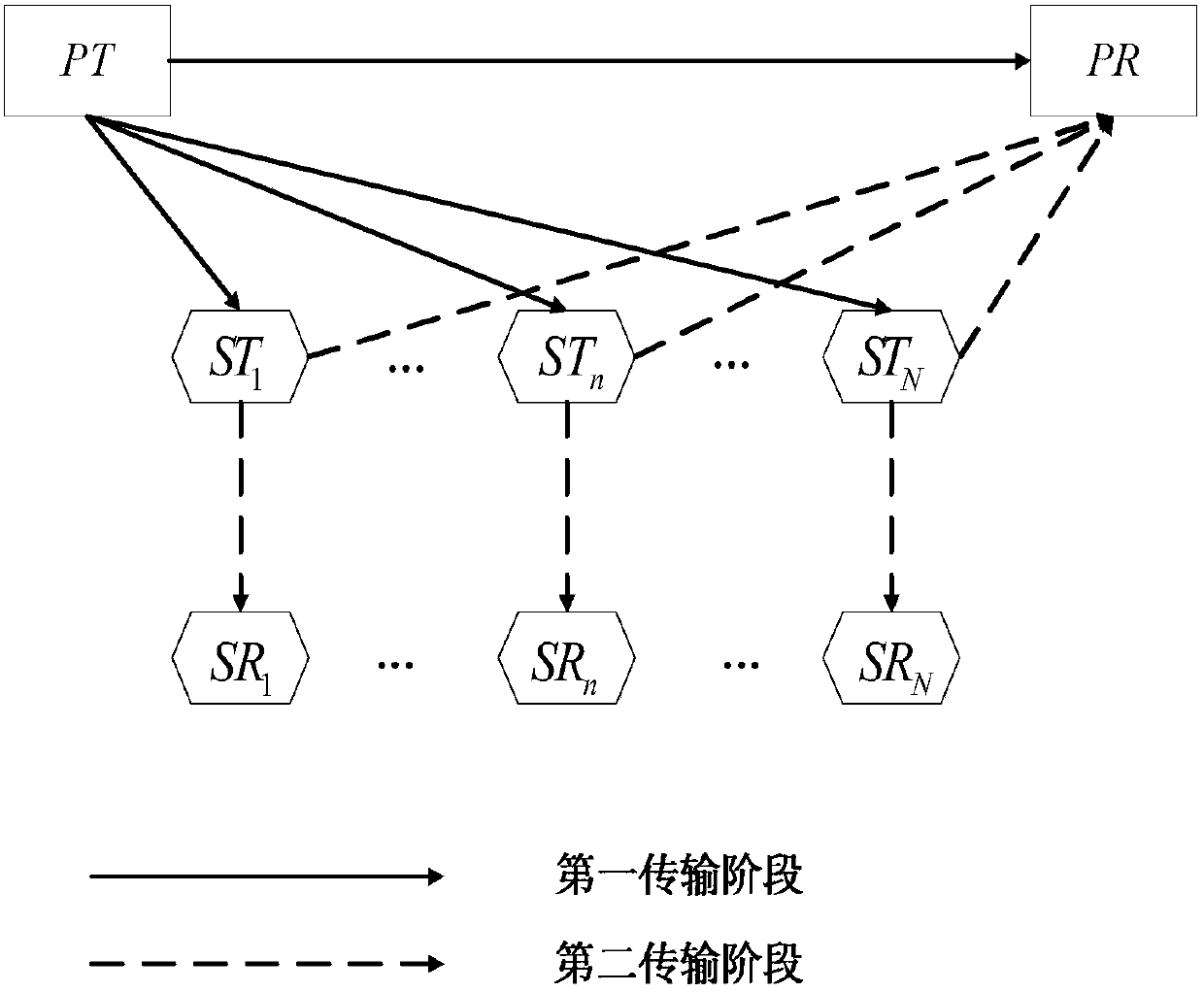A Fair and Energy-Efficient Joint Resource Allocation Method in Collaborative Cognitive Networks
A technology of collaborative cognition and resource allocation, applied in the field of joint resource allocation, it can solve problems such as allocating resources and considering user fairness.
- Summary
- Abstract
- Description
- Claims
- Application Information
AI Technical Summary
Problems solved by technology
Method used
Image
Examples
Embodiment
[0048] Examples of the present invention figure 1 As shown, a fair and energy-efficient joint resource allocation algorithm in a cooperative cognitive network is implemented by the following cooperative cognitive radio system: the system includes two parts, the primary system and the secondary system, and the primary system consists of the primary user transmitter PT , the primary user receiving end PR, the secondary system consists of N pairs of secondary user transmitting end ST n and the secondary user receiver SR n Composition, where n∈U represents the nth secondary user, set U={1,2,3,...,N}, the secondary system acts as a relay during the operation of the primary system to assist it in transmitting signals, The relay mode is DF (Decode-and-Forward); there are N secondary users and K subcarriers in this system, and the set of subcarriers is set S={1,2,3,...,K}, and γ k,0 , gamma n,k,1 , gamma n,k,2 and gamma n,k,3 They are the primary user transmitter to the primary u...
PUM
 Login to View More
Login to View More Abstract
Description
Claims
Application Information
 Login to View More
Login to View More - R&D
- Intellectual Property
- Life Sciences
- Materials
- Tech Scout
- Unparalleled Data Quality
- Higher Quality Content
- 60% Fewer Hallucinations
Browse by: Latest US Patents, China's latest patents, Technical Efficacy Thesaurus, Application Domain, Technology Topic, Popular Technical Reports.
© 2025 PatSnap. All rights reserved.Legal|Privacy policy|Modern Slavery Act Transparency Statement|Sitemap|About US| Contact US: help@patsnap.com



